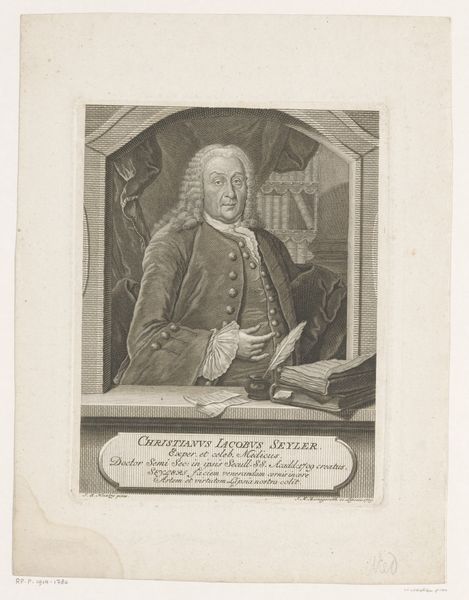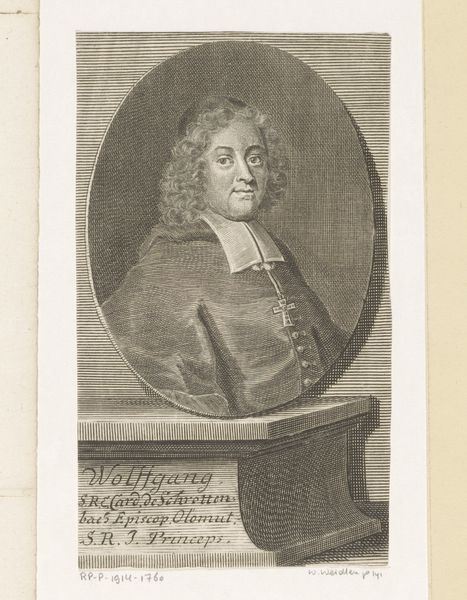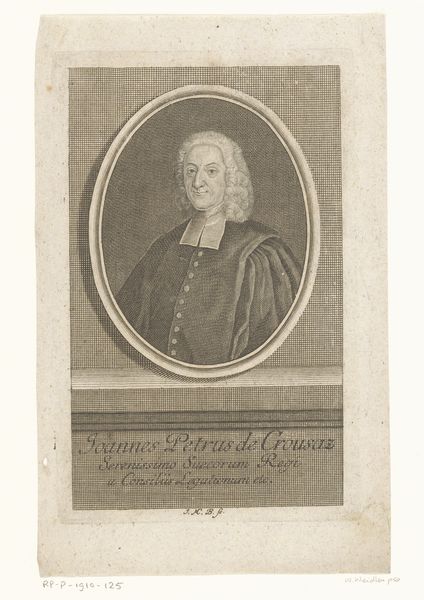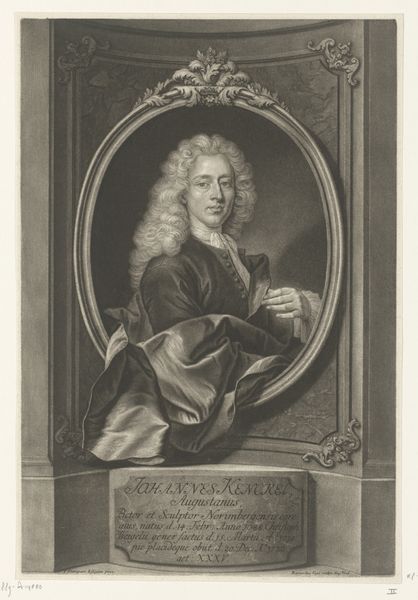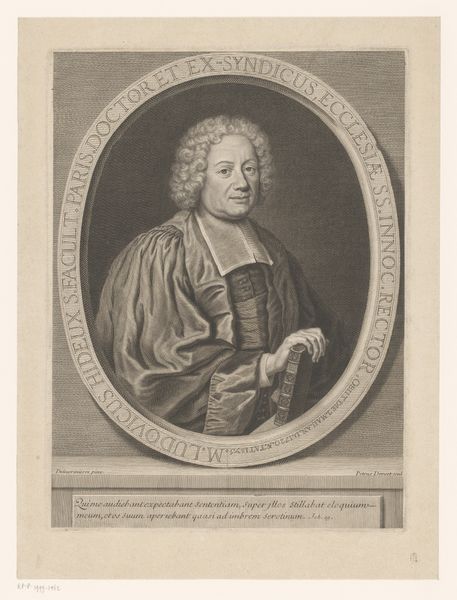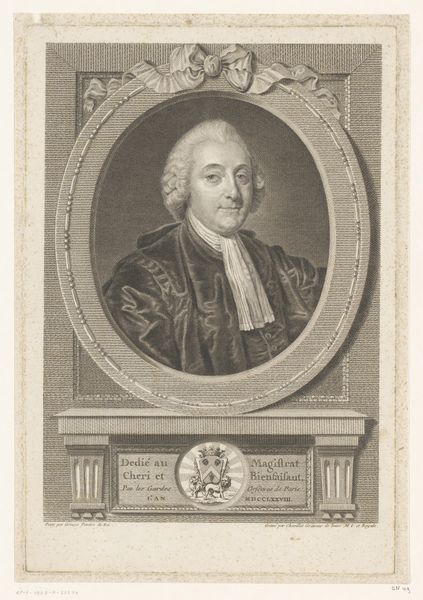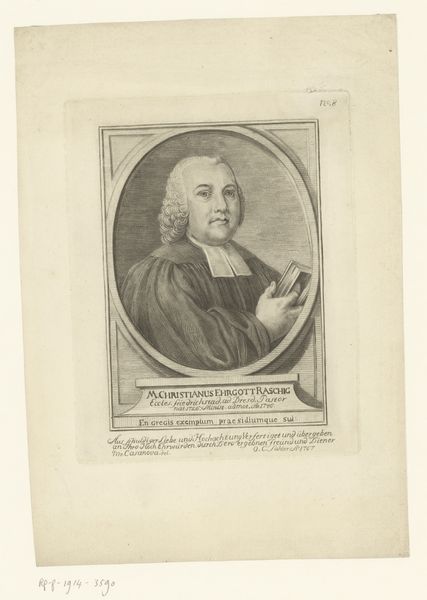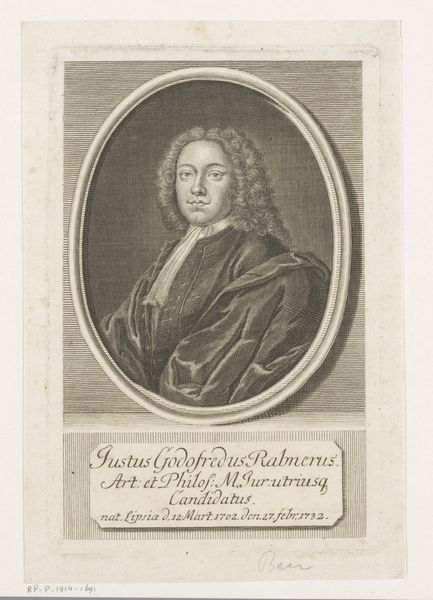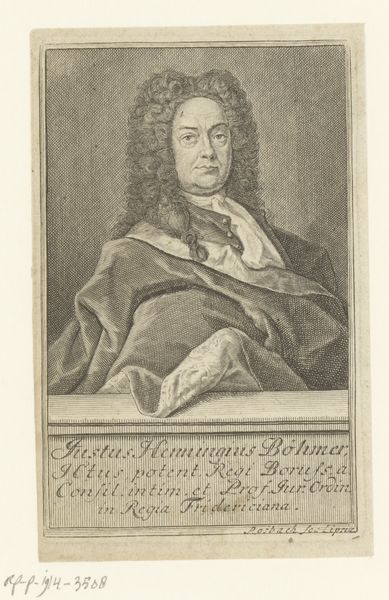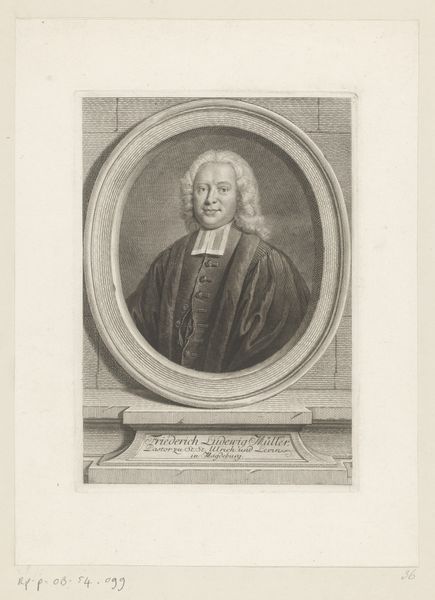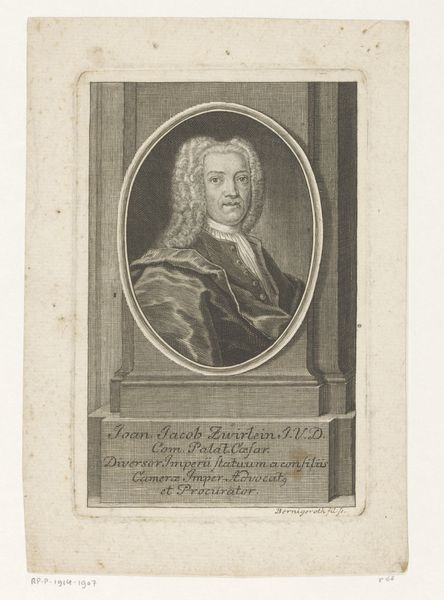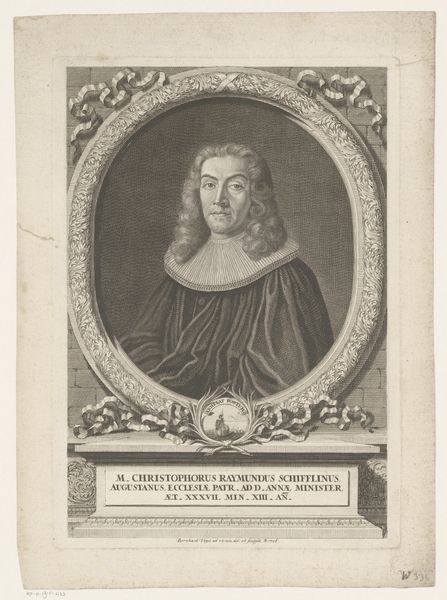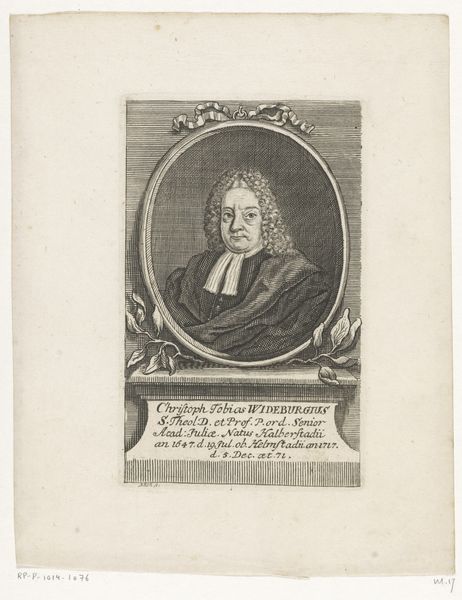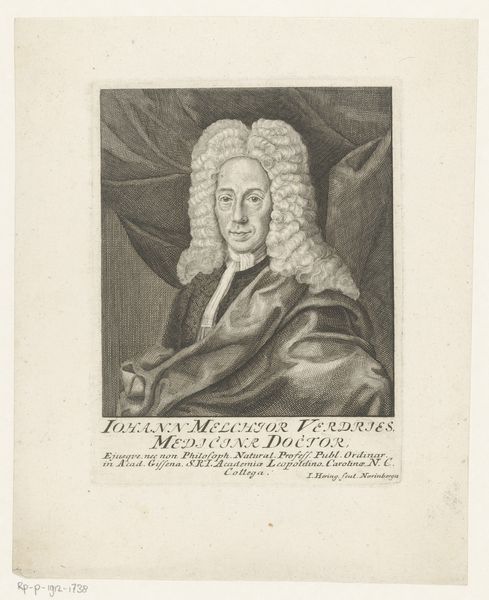
Portret van Johann Hugo von Orsbeck, keurvorst en aartsbisschop van Trier 1707
0:00
0:00
print, engraving
#
portrait
#
baroque
# print
#
history-painting
#
engraving
Dimensions: height 142 mm, width 91 mm
Copyright: Rijks Museum: Open Domain
Curator: Welcome to the Rijksmuseum. We’re standing before a portrait of Johann Hugo von Orsbeck, Elector and Archbishop of Trier, made in 1707 by Johann Martin Bernigeroth. Editor: He certainly looks like a man of power, doesn’t he? There's a kind of somber weight to the image. The light catches his face, and the heavy robes suggest opulence but also restriction. Curator: Indeed. Bernigeroth executed this as an engraving, a process involving meticulously cutting lines into a metal plate to hold ink. Consider the time and skill needed to render those fine details of his vestments. And who produced the paper and inks? Editor: Speaking of details, note the Cross. The weight of religious symbolism here is palpable. You're also seeing temporal authority; his hand rests upon what appears to be a scepter. I wonder about the implications of unifying sacred and secular authority at this particular historical moment. Curator: Absolutely. It's crucial to remember this image circulated widely as a print. How was its production financed, how was the paper made, how was it distributed to convey authority and legitimacy during his time? This object represents more than individual status. It signifies the industrial networks enabling early 18th-century power structures. Editor: While I understand your focus on materials, the image resonates across time because of enduring symbolic meanings and visual language. Consider the formal Baroque elements, emphasizing power in portraits across diverse sitters in very different contexts. Curator: I agree, analyzing historical symbolism grants insight. Yet, we gain further understanding by examining the economics of artistic production in Bernigeroth's era. What are the historical inventories or account books associated with this kind of artistic production? That’s where a fuller understanding of power is illuminated. Editor: Fair point. Combining attention to materials and recognizing symbolism can unlock rich layers of cultural understanding. It serves to unite people across disparate temporal contexts. Curator: Precisely. This union presents a thorough narrative. I encourage others to delve deeper, investigate related archival information, and maybe examine printmaking processes further. Editor: Yes, observe, and analyze. Question how images like this one helped to establish lasting visual motifs through different media to the present day.
Comments
No comments
Be the first to comment and join the conversation on the ultimate creative platform.
